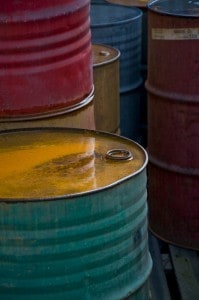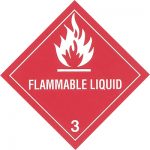Why chemical spill prevention is important for your facility
 Chemical spills or leaks can pose a direct threat to workers’ health, the environment, and nearby animals. This is why the Occupational Safety and Health Administration (OSHA) and the Environmental Protection Agency (EPA) have strict rules in place. For both the prevention and cleanup of workplace hazardous chemical leaks or spills.
Chemical spills or leaks can pose a direct threat to workers’ health, the environment, and nearby animals. This is why the Occupational Safety and Health Administration (OSHA) and the Environmental Protection Agency (EPA) have strict rules in place. For both the prevention and cleanup of workplace hazardous chemical leaks or spills.
When you’re running a business, it can be easy to overlook the fundamentals of maintaining a safe working environment. But companies storing, transporting, using or handling hazardous chemicals must take precautionary measures.
And that’s because failing to take preventive measures against chemical spills could place your company at risk. Including OSHA and/or EPA fines. Not to mention placing your workers’ health and well-being in jeopardy.
Some people assume that only large-scale chemical leaks—like the one in West Virginia in 2014—are dangerous. But in reality, it’s often smaller leaks that prove more harmful to workers and the environment. So read on to see our three tips for reducing chemical spill risks in your facility.
1. Store hazardous chemicals under cover outdoors
To protect against rainfall, always store your hazardous chemicals in a covered area outdoors. If rainwater mixes with a hazardous chemical, it can dilute it. And so contaminate the workplace or become a storm-water pollutant. Granted, chemicals diluted with water are typically weaker. But this also means there’s more of it. Which means response teams have to work extra hard to clean up hazardous chemical spills mixed in with rainwater.
There are a number of different outdoor drum storage solutions available. Including lockable units with hard or roll tops. As well as larger shed buildings that can hold up to 20 drums.
What is a hazardous chemical?
A hazardous chemical can include any of the following products that are commonly found in many workplaces:
- Flammables
- Corrosives
- Oils
- Solvents
- Explosives
- Combustibles
2. Properly label all hazardous chemicals
 OSHA requires companies to properly label any hazardous chemical that it stores or uses in the workplace. Each type of chemical must have a clear and accurate label describing its contents. For instance, whether it is flammable, corrosive, oil or another chemical type in the list above. Color coding your safety cans is one helpful way to quickly ID its contents.
OSHA requires companies to properly label any hazardous chemical that it stores or uses in the workplace. Each type of chemical must have a clear and accurate label describing its contents. For instance, whether it is flammable, corrosive, oil or another chemical type in the list above. Color coding your safety cans is one helpful way to quickly ID its contents.
Why is correct labeling necessary? Well, that’s because it helps ensure safe response in the event of an accidental spill. By understanding the type of chemical spill, responders can use the correct clean up materials. As well as knowing which level of personal protective equipment (PPE) they need to wear.
3. Train workers in chemical spill prevention
Of course, a very important step in preventing workplace spills involves employee training. You should train workers how to properly handle respective chemicals to minimize risks. This includes everything from which container to store chemicals in, to what PPE to wear while using them.
Finally, ensure your staff know the proper cleanup procedures in the event of a spill. Including which type and color absorbents to use. See our post to learn how to choose the right spill containment kit for your facility.
 Have questions about which chemical spill containment or absorbent products to purchase? Contact Travis Zdrazil at travis@absorbentsonline.com or (800) 869-9633.
Have questions about which chemical spill containment or absorbent products to purchase? Contact Travis Zdrazil at travis@absorbentsonline.com or (800) 869-9633.